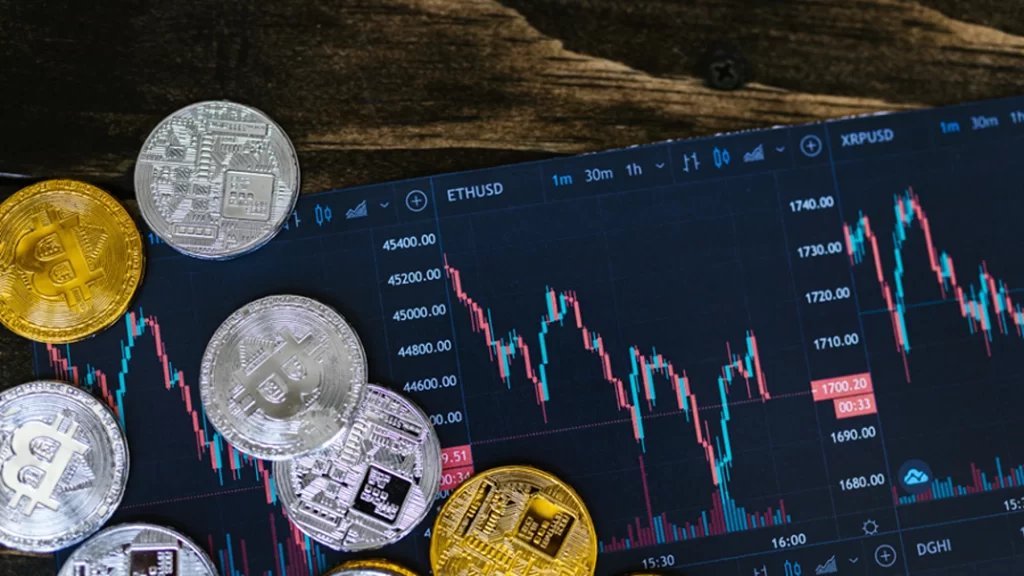Institutional investment in Bitcoin mining by large public companies has notably impacted the landscape for individual and small-scale miners, with significant consequences for the network’s dynamics, according to a Bitfinex report on the cryptocurrency mining ecosystem ahead of the Bitcoin halving.
The study reveals a shift from the decentralized vision of Bitcoin, where individuals contributed to network security, to a scenario dominated by corporate entities.
These entities prioritize shareholder returns, operating on a much larger scale with different priorities than smaller miners.
The report emphasizes their focus on profitability and managing investor expectations, often sidelining the community’s more altruistic values such as network security, egalitarian access, and censorship resistance.
The entry of Wall Street funding into Bitcoin mining has professionalized the sector, leading to increased hashing power that could theoretically enhance network security and stability.
However, concerns arise about centralization and corporate influence, which could diverge from Bitcoin’s original ethos of being open, borderless, and resistant to control by any single entity.
The Bitfinex analysis notes that the consolidation of mining operations by these large companies could potentially threaten Bitcoin’s decentralized nature, as they are able to scale operations more effectively, secure cheaper energy, and invest in the latest technologies, making it difficult for smaller miners to compete.
The infusion of institutional capital has altered the incentive structure within the network, favoring those who can operate on a large scale.
This shift raises questions about the future of Bitcoin’s decentralized ethos and whether the increased centralization could impact network security and the distribution of mining rewards.
The survival of independent and hobbyist miners now depends on their ability to innovate and collaborate.
Mining pools are suggested as a solution, allowing for the pooling of resources to stay competitive.
Moreover, the sustainability of hobby mining is contingent on the development of more efficient mining technologies and the utilization of renewable energy.
Geographical diversification of mining operations is also highlighted as vital for maintaining the network’s decentralization.
Emerging markets with renewable or untapped energy sources are seen as promising locations for new mining ventures.
The report concludes that, while the landscape is evolving, the core community values and decentralized nature of Bitcoin must be preserved to ensure the network’s integrity and resilience.
To submit a crypto press release (PR), send an email to sales@cryptointelligence.co.uk.
Bitcoin recently marked a significant milestone by closing above $69,000 on March 25, indicating a bullish momentum reclaiming an important resistance zone.
This event, as reported by Cointelegraph Markets Pro and TradingView, registered BTC/USD’s highest daily closure in nearly ten days, demonstrating a notable uptrend.
The surge was particularly catalyzed by a positive shift during the initial Wall Street trading session, where Bitcoin’s value increased by up to $4,600 within a single day.
This momentum carried forward, propelling Bitcoin past the $71,000 threshold subsequently.
Financial commentator Tedtalksmacro highlighted a shift in the market dynamics, pointing out that U.S. spot Bitcoin exchange-traded funds (ETFs) experienced net inflows after a week of negative flows and significant withdrawals from the Grayscale Bitcoin Trust (GBTC).
He shared, “After 5 consecutive outflow days, Bitcoin spot ETFs saw +$15.4M USD flow in on Monday. +262M from Fidelity.
“The bid is back.”
READ MORE: Momentum Shifts in Bitcoin Market as Institutional Outflows Slow and Optimism Grows for Future Highs
Despite the continued large outflows from GBTC, amounting to $350 million, BTC/USD managed to overcome these potential hindrances, signaling strong market resilience.
Market analysts are looking at the developments with an optimistic lens.
Matthew Hyland, a well-known trader and analyst, speculated about the potential for Bitcoin’s price to reach the $100,000 mark, especially if the current momentum can clear significant resistance areas.
He underscored this possibility based on a reset of a classic Bitcoin price metric that had previously aligned with a notable increase in Bitcoin’s value.
The daily relative strength index (RSI), a key indicator of market momentum, also showed promising signs, although it remained below the threshold typically associated with bull market conditions.
Analyst Mark Cullen, however, cautioned about potential volatility, pointing to “gaps” in the CME Group Bitcoin futures markets that could act as short-term price targets.
A specific gap below $64,000 was identified as unfilled, suggesting possible price movements.
Conversely, Daan Crypto Trades downplayed the immediate impact of these gaps, suggesting that significant breakouts often leave such gaps unfilled without necessitating immediate corrections, thus indicating a less pressing concern for a potential price dip in the near term.
To submit a crypto press release (PR), send an email to sales@cryptointelligence.co.uk.
In the recent financial landscape, the United States spot Bitcoin exchange-traded funds (ETFs) have witnessed a remarkable resurgence in investment, marking a significant turnaround after experiencing a series of net outflows over five days.
This rejuvenation was particularly evident on March 26, when the 10 newly sanctioned spot Bitcoin ETFs collectively attracted a net inflow of $418 million, as reported by Farside Investors data.
Among these, BlackRock’s and Fidelity’s funds were at the forefront, channeling robust inflows that underscored investor confidence.
Fidelity’s Bitcoin ETF, in particular, showcased its strongest daily inflow since March 13, securing an impressive $279.1 million on March 26.
This surge was accompanied by the acquisition of an additional 4,000 BTC, marking the fund’s second day of inflows surpassing the $260 million threshold.
Meanwhile, BlackRock’s Bitcoin ETF also drew significant attention with inflows of $162.2 million, despite these figures not matching the higher inflow rates seen earlier in the month, which averaged over $300 million daily.
The investment enthusiasm extended beyond these two giants, with the Ark 21Shares Bitcoin ETF recording its most substantial day since March 12, amassing $73.6 million in inflows.
Similarly, Invesco Galaxy, Franklin Templeton, and Valkyrie each experienced inflows exceeding $26 million in their respective funds.
In contrast, Grayscale’s Bitcoin Trust (GBTC) faced a significant outflow of $212 million on the same day.
Despite this, the cumulative net inflows into other funds overwhelmingly counteracted GBTC’s losses.
Since transitioning from a trust to an ETF on January 11, Grayscale has witnessed a dramatic reduction of 277,393 BTC, equating to an approximate value of $19.5 billion.
Highlighting the significance of these developments, Bloomberg’s senior ETF analyst Eric Balchunas pointed out the inclusion of Bitcoin ETFs among the largest 30 asset funds within their initial 50 days of trading in a post on X (formerly Twitter) on March 26.
BlackRock’s IBIT and Fidelity’s FBTC stood out, with Balchunas noting their exceptional performance.
He also mentioned that the Bitwise Bitcoin ETF, despite being the 18th largest in terms of assets under management, surpassed the world’s largest SPDR Gold Shares fund in size.
Adding to the evolving Bitcoin ETF landscape, Hashdex emerged as the 11th issuer of spot Bitcoin ETFs in the U.S. on March 26, transitioning its futures fund into a spot product now trading under the ticker DEFI.
This strategic move further underscores the growing embrace and diversification of Bitcoin-related investment products in the financial market.
To submit a crypto press release (PR), send an email to sales@cryptointelligence.co.uk.
Texas-based Bitcoin miner Giga Energy has taken a significant step towards global expansion by establishing operations in Argentina, leveraging the often-wasted energy from natural gas flaring in the country’s oil fields.
Brent Whitehead, Giga’s co-founder, expressed enthusiasm about this venture in a LinkedIn post on March 26, highlighting it as a pivotal development for the company.
He stated, “This move not only broadens our operational landscape but also aligns with our vision to mitigate flaring globally.”
The process of gas flaring involves burning off the natural gas that emerges during oil extraction, releasing methane.
Giga Energy’s innovative approach converts this methane into electricity, which is then used to power its Bitcoin mining rigs.
A novel aspect of Giga’s operation in Argentina involves placing a large shipping container filled with Bitcoin miners atop an oil well, using the excess gas to generate electricity for mining activities.
This system, as reported by CNBC on March 26, is set to significantly enhance Giga’s mining capabilities.
Located in the province of Mendoza, Giga’s Argentinian mining site began testing in December and has mined Bitcoin worth between $200,000 and $250,000.
Despite this early success, co-founder Matt Lohstroh told CNBC that the operation is awaiting the importation of additional equipment to fully scale its activities and achieve profitability.
READ MORE: Bitcoin Surges Past $71,000 as Whales Accumulate, Pre-Halving Dip Possibly Over
Argentina is notable for having the world’s second-largest shale gas reserve, a factor that underscores the potential of Giga’s venture in the country.
Beyond economic benefits, the operation aims to reduce methane emissions, contributing to environmental sustainability.
Brent Whitehead emphasized the ecological impact, noting that by harnessing stranded natural gas for energy-intensive computing, Giga is actively reducing global methane emissions.
Collaborating with IT services company Exa Tech for onsite operations and Phoenix Global Resources for gas supply, Giga Energy is set to make a considerable impact.
CMC Data: Bitcoin (BTC) – Ethereum (ETH) – Shiba Inu (SHIB) – Dogecoin (DOGE) – Fetch.ai (FET)
Since its inception in 2019, Giga has installed 150 megawatts of mining containers in Texas and Shanghai.
This expansion coincides with the anticipation of the Bitcoin halving event, expected to occur around April 20, which will reduce the mining reward and possibly shift global mining activities to regions with lower electricity costs.
Jaran Mellerud, founder and chief mining strategist at Hashlabs Mining, identified Argentina and Paraguay as promising locations for Bitcoin mining in South America, reflecting the strategic importance of Giga Energy’s new venture.
To submit a crypto press release (PR), send an email to sales@cryptointelligence.co.uk.
Following an unexpected rally, Bitcoin has notably rebounded, surpassing the $71,000 mark, hinting that the anticipated pre-halving dip may have concluded.
This surge came on the heels of a significant day of accumulation, as reported on March 25 by blockchain analytics firm Santiment, marking it as one of the most substantial in recent years.
Santiment highlighted that this rebound caught traders off guard, particularly as “key stakeholders” amassed a considerable amount of Bitcoin over the weekend.
Specifically, wallets categorized as “sharks” and “whales,” holding between 10 and 10,000 coins, accumulated 51,959 BTC on March 24, equating to approximately $3.4 billion.
This acquisition represented 0.263% of Bitcoin’s total available supply at the time.
With the Bitcoin halving event approaching in about three weeks, around April 19, Santiment suggested that the continued growth of these wallets could positively influence the overall cryptocurrency market caps.
Contrary to the expectations of some crypto analysts who anticipated a more significant drop ahead of the halving, Bitcoin’s decline was relatively modest.
Data from CoinGecko indicated that Bitcoin’s price only fell about 17% from its all-time high of $73,738 on March 14 to a low of $61,494 on March 20. This downturn mirrored the pre-halving retracement in 2020 closely.
Technical analyst Rekt Capital observed that the current retracement is nearly identical to the 2020 pre-halving dip, with Bitcoin’s price reducing by approximately 18% this cycle, compared to just over 19% previously.
He had earlier speculated that this year’s pre-halving retracement would likely be milder and shorter than in past cycles.
Kaiko, a crypto research firm, examined the market’s response to last week’s dip on March 25, finding that selling pressure increased after the U.S. market closed.
Their analysis pointed out that liquidity in the cryptocurrency market is fragmented not only across different exchanges but also among various trading pairs.
At the time of reporting, Bitcoin was experiencing a 5.2% increase in its value, trading at $70,252, after reaching an intraday high of $71,000 on March 25.
This recent movement underscores the volatile nature of the cryptocurrency market and the significant impact of strategic accumulations by large-scale investors.
To submit a crypto press release (PR), send an email to sales@cryptointelligence.co.uk.
The Bitcoin market may face a downturn following the anticipated halving event, fueled by a decrease in inflows to spot Bitcoin exchange-traded funds (ETFs) and a high volume of unrealized gains among traders, which could heighten bearish tendencies on Bitcoin’s value.
Julio Moreno, CryptoQuant’s head of research, highlighted that the selling pressure on Bitcoin is intensifying due to the profits not yet realized from its recent upsurge.
He warned that a forthcoming decline in spot Bitcoin ETF contributions could exacerbate this situation, adversely affecting Bitcoin prices.
Supporting Moreno’s viewpoint is the CryptoQuant’s net unrealized profit and loss (NUPL) indicator. A NUPL value of 0.7 is seen as a red flag, suggesting investors might be poised to cash in, potentially driving prices lower and amplifying sell-off activities.
On March 17, the NUPL indicator stood at 0.606, a slight increase despite recent price adjustments in the market.
Moreno elaborates on potential factors depressing prices, notably the deceleration in Bitcoin ETF acquisitions and entering the halving phase amid substantial unrealized gains by traders, prompting them to secure profits.
On the flip side, the recent performance of Bitcoin ETFs on March 14 marked a significant dip, recording one of its lowest net inflow days with only $132 million, showcasing an 80% reduction compared to preceding sessions.
Despite these bearish signals, the aftermath of the halving might not mirror the severity of past downturns.
James Butterfill from CoinShares posits that institutional investors’ strategy of portfolio rebalancing could mitigate volatility.
READ MORE: Momentum Shifts in Bitcoin Market as Institutional Outflows Slow and Optimism Grows for Future Highs
He notes a decrease in volatility from the last bull market in 2021 and a rise in prices surpassing previous peaks, attributing this to the stabilizing influence of portfolio adjustments.
The appeal of Bitcoin ETFs remains robust, with total net inflows crossing the $12 billion threshold on March 15.
The industry expects further growth as brokerage firms hasten their evaluation processes for offering Bitcoin ETFs to their clientele.
Additionally, investments through Bitcoin ETFs are softening the negative price impacts of miner sales preceding the halving, an event that slashes the reward for mining new Bitcoin blocks by half.
This year, the reward will decrease from 6.25 BTC to 3.125 BTC, although mining costs are projected to stay constant or even increase.
CoinShares anticipates the average post-halving production cost for miners to be around $37,856.
Butterfill comments on the pre-halving trend of miners liquidating part of their Bitcoin reserves for profit maximization, a practice evident in 2024 as well.
CryptoQuant’s data reveals a two-year low in miner reserves, with 1.81 million Bitcoin held as of March 15.
The Bitcoin halving, a deflationary mechanism occurring every four years, is expected around April 19, 2024, potentially altering the dynamics of Bitcoin mining and its market valuation.
To submit a crypto press release (PR), send an email to sales@cryptointelligence.co.uk.
In Argentina, the recent surge in Bitcoin demand reflects the population’s attempts to safeguard their savings amid the peso’s rapid devaluation.
Bloomberg highlighted this trend on March 20, citing a report from Lemon Cash, a cryptocurrency exchange, which recorded an unprecedented interest in Bitcoin.
In the week ending March 10, nearly 35,000 Argentines turned to Bitcoin, marking a twofold increase in the cryptocurrency’s weekly purchase rate compared to the previous year.
The Argentine peso has suffered a significant decline over the past year, with its value against the US dollar plummeting fourfold, from 0.0049 USD in March 2023 to 0.0012 USD.
This depreciation has been a key driver for many Argentines to look for more stable investment alternatives, such as Bitcoin.
Lemon Cash isn’t the only platform experiencing increased demand for cryptocurrencies.
Other major Argentine exchanges like Ripio and Belo have reported similar trends. Belo’s CEO, Manuel Beaudroi, observed a shift in preference from stablecoins to Bitcoin, attributing this change to the cryptocurrency’s recent price rally.
Beaudroi explained, “The user decides to buy Bitcoin when they see the news that the currency is going up, while stablecoin is more pragmatic and many times used for transactional purposes, as a vehicle to make payments abroad.”
Furthermore, he mentioned that Belo has witnessed a tenfold increase in transactions involving Bitcoin and Ether in early 2024 compared to the same timeframe in the previous year.
Despite the burgeoning interest in Bitcoin, there’s still a notable inclination towards stablecoins.
Argentines are reportedly bypassing well-known exchanges to purchase USD stablecoins through “crypto caves,” unregulated markets that offer an escape from stringent currency controls and inflation.
The adoption of digital currency in Argentina is gradually extending beyond investment purposes.
In December 2023, Diana Mondino, minister of foreign affairs, international trade, and worship, announced a decree facilitating the use of Bitcoin and other cryptocurrencies under specific conditions as part of economic reform efforts.
This led to a groundbreaking rental agreement in Rosario, where a tenant agreed to pay their rent in Bitcoin, showcasing the growing practical use of digital currencies in everyday transactions.
To submit a crypto press release (PR), send an email to sales@cryptointelligence.co.uk.
The Uzbekistan National Agency for Prospective Projects (NAPP) announced an increase in monthly fees for cryptocurrency market participants on March 19, 2024.
This move revises an initial directive from the Ministry of Justice back in September 2022, aimed at enhancing the financial contributions from the crypto sector to state revenues.
This decision comes after NAPP’s evaluation of the sector’s profitability, leading to a new fee structure affecting crypto exchanges and retailers alike.
Crypto exchanges in Uzbekistan will now incur a monthly fee of 740 basic reference values (BRV), equivalent to about 251.6 million Uzbekistani som ($20,015), a significant hike from the previous 400 BRV or 136 million som ($10,819).
The BRV, a unit used for calculating various financial obligations like taxes and fines, has thus become a more substantial burden for these businesses.
Similarly, the fees for crypto retailers have risen sharply to 185 BRV per month, translating to 62.9 million som ($5,003), up from a mere 20 BRV or about 6.8 million som ($540) previously.
NAPP’s rationale behind these adjustments is to double the revenue from the crypto sector while ensuring these changes do not adversely affect the service providers’ financial health.
The revised fee system is set to be implemented on June 20, giving stakeholders three months to adjust.
This regulatory adjustment follows a Memorandum of Understanding between NAPP and Tether, focusing on fostering blockchain innovations within Uzbekistan, such as stablecoins and digital asset tokenization.
Although the finer details of this partnership remain confidential, Tether has expressed its commitment to working with local authorities to develop a conducive legal and regulatory environment for crypto assets.
Additionally, this development is in line with NAPP’s legal action against Binance for operating without a proper license and failing to settle fines. Uzbekistan mandates that all crypto exchanges operate with a license and house their trading servers within the country.
This policy, enforcing licensed operation of crypto services, was established in 2023, with the first batch of licenses awarded in November 2022.
Prior to this, Uzbekistan had already restricted access to major international crypto exchanges like Binance, FTX, and Huobi over unlicensed activities accusations.
To submit a crypto press release (PR), send an email to sales@cryptointelligence.co.uk.
Over the last month, Boyaa Interactive, a Hong Kong-based online gaming company, has seen its shares skyrocket by 318% following its decision to diversify investments into cryptocurrencies.
The company announced a $100 million initiative to invest in Bitcoin (BTC), Ether (ETH), and stablecoins such as Tether (USDT) and USD Coin (USDC), allocating $45 million to BTC, $45 million to ETH, and $10 million to stablecoins.
As part of this strategic move, Boyaa Interactive disclosed the purchase of 1,110 Bitcoin at an average price of $41,790 each, 14,855 Ether at approximately $2,777 per unit, and around 8,000,000 units of Tether.
The firm expressed its intention to double down on its crypto investments with an additional $100 million.
This investment comes at a time when Boyaa’s core business, online gaming, continues to perform solidly, generating 100 million yuan ($13.90 million) in revenue and 32.05 million yuan ($4.46 million) in earnings, witnessing growth rates of 6% and 72%, respectively.
The broader context includes a bearish stock market in China, with many firms holding large cash balances and trading below their book values.
The NFT market has shown varying degrees of volatility, illustrated by the floor price of “Nobody,” a collection by legendary director Stephen Chow, which dropped over 70% within a month.
READ MORE: Bitcoin Nears $60K Amid Weekend Sell-Off; Market Eyes ETF Resurgence and Futures Gap for Recovery
Despite promotional efforts, the collection’s trading volume has stagnated after an initial surge.
Similarly, the Bruce Lee Foundation’s NFT collection and Wassie Avatars have experienced dramatic price fluctuations, reflecting the speculative nature of the NFT market despite its recovery from lows in 2020-2021.
Regulatory scrutiny in Hong Kong has increased, with the Securities & Futures Commission (SFC) adding crypto exchange Bybit and its investment products to its investment warning list.
This action underscores the regulatory requirements for operating within the city and the criminal implications of non-compliance.
Concurrently, discussions about a potential spot Bitcoin ETF in Hong Kong hint at a more direct and cost-efficient structure compared to those in the United States, indicating a keen interest in pioneering such financial products in the region.
This period signifies a dynamic phase for Hong Kong’s crypto landscape, marked by significant investments, regulatory developments, and speculative NFT market movements.
To submit a crypto press release (PR), send an email to sales@cryptointelligence.co.uk.
BlackRock‘s spot Bitcoin ETF is on track to surpass Grayscale’s Bitcoin holdings, potentially becoming the largest institutional holder of Bitcoin in the coming weeks.
BlackRock’s ETF, the iShares Bitcoin Trust, currently holds 238,500 Bitcoin, valued at $15.5 billion, with daily inflows averaging $274 million or around 4,120 Bitcoin.
In contrast, Grayscale’s Bitcoin Trust (GBTC) has 350,252 BTC, worth $23 billion, but faces daily outflows of about $277 million, equivalent to 4,140 BTC.
Without significant changes in these trends, BlackRock is expected to overtake Grayscale by April 11, a milestone that could be reached even sooner if BlackRock’s inflows return to the previous week’s average of 7,200 Bitcoin daily.
George Tung, a YouTuber known for his channel CryptosRUs, predicted, “BlackRock is going to flip Grayscale soon,” estimating the shift to occur within the next two weeks.
This development underscores the dynamic landscape of Bitcoin investment, with BlackRock poised to claim the title of the world’s largest institutional Bitcoin holder.
The narrative of this transition is further complicated by the record outflows from GBTC, which experienced its largest single-day loss of $643 million on March 18.
These outflows have raised concerns about potential impacts on Bitcoin’s price, though Senior Bloomberg ETF analyst Eric Balchunas remains optimistic, suggesting the exodus could end within weeks.
He also hinted that the recent surge in outflows might be linked to the financial troubles of crypto firms like Genesis and Digital Currency Group.
Adding to BlackRock’s momentum, its ETF recently surpassed MicroStrategy’s Bitcoin holdings, making it a significant player in the crypto space.
As of now, MicroStrategy holds 214,246 BTC, following a recent acquisition of 9,000 BTC.
This shift not only highlights BlackRock’s expanding influence in the cryptocurrency market but also marks a pivotal moment in the institutional adoption of Bitcoin, reflecting broader trends and challenges within the crypto industry.
To submit a crypto press release (PR), send an email to sales@cryptointelligence.co.uk.









